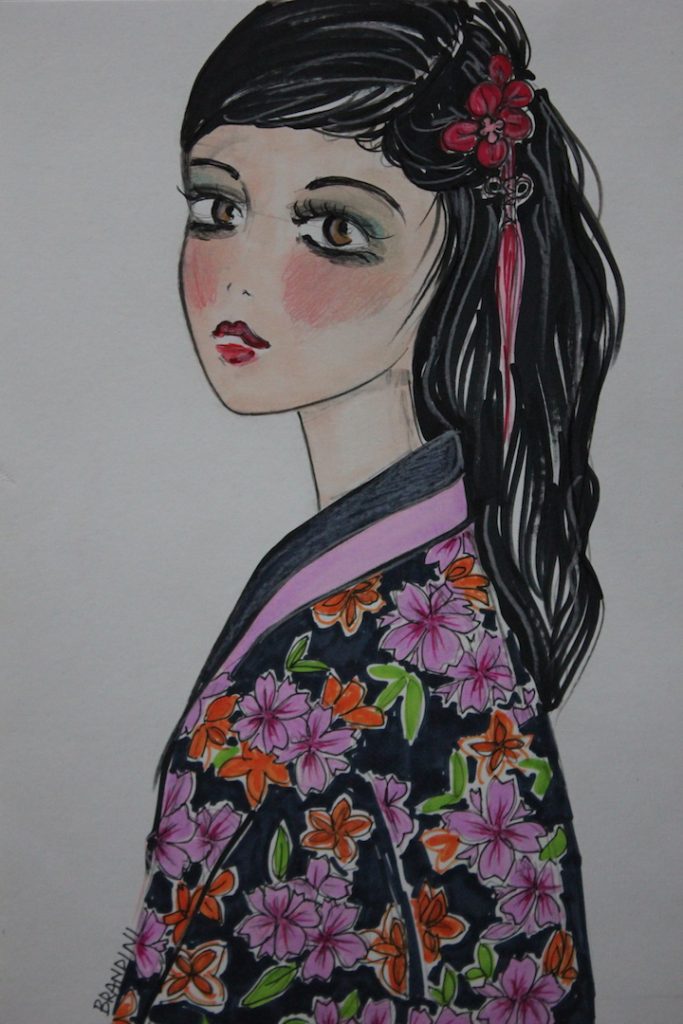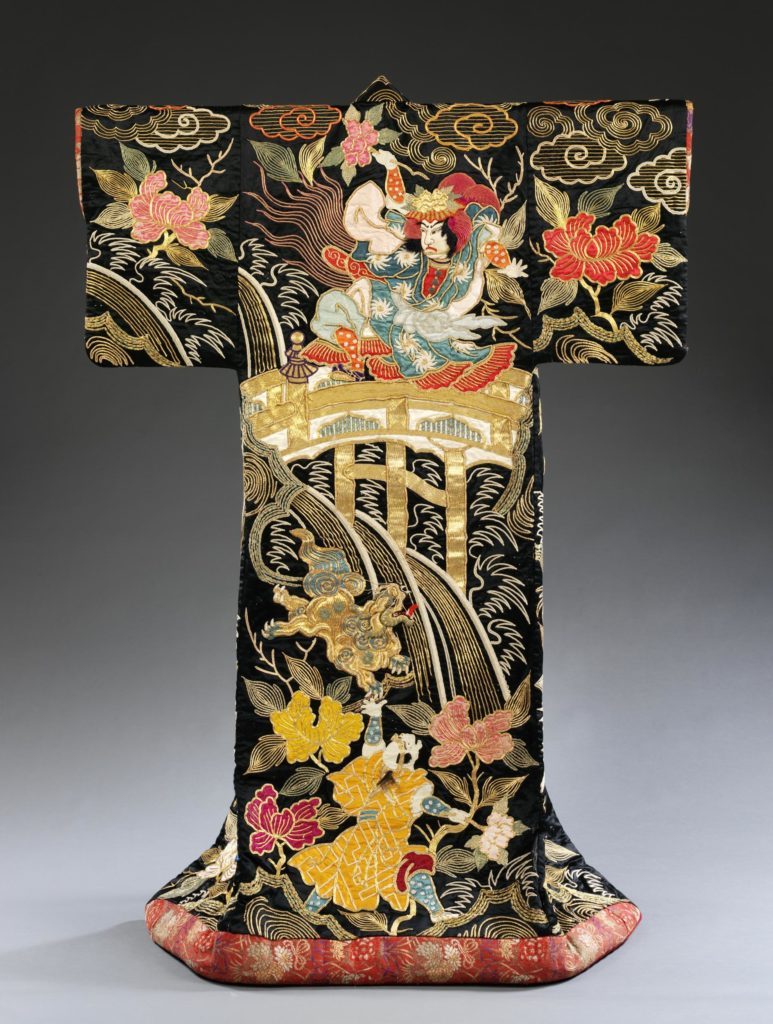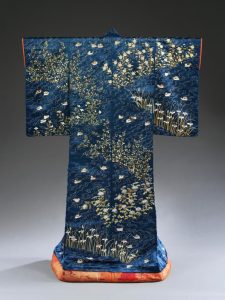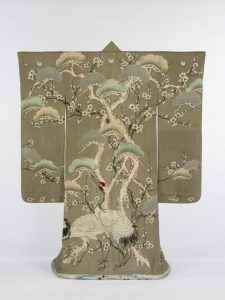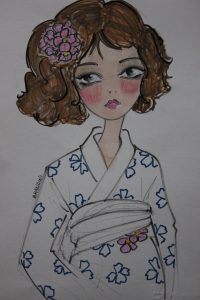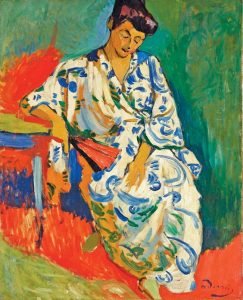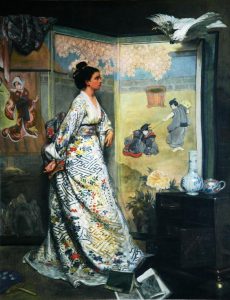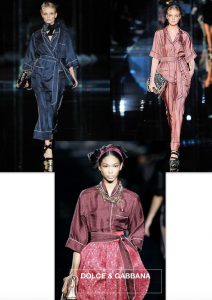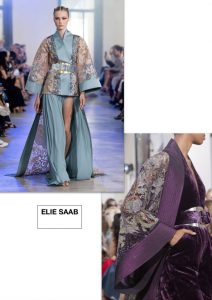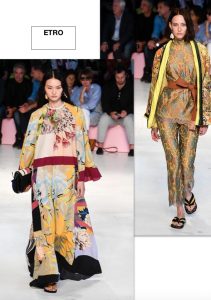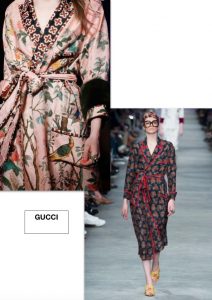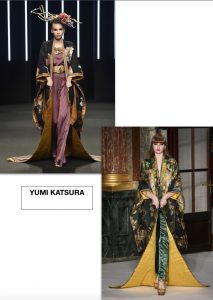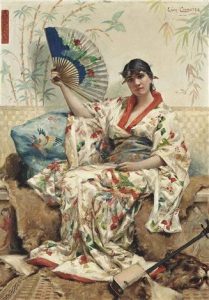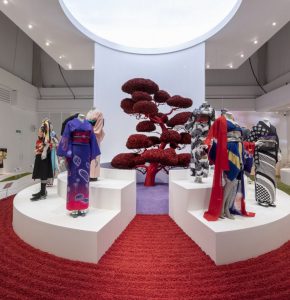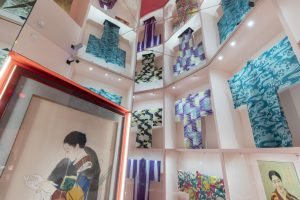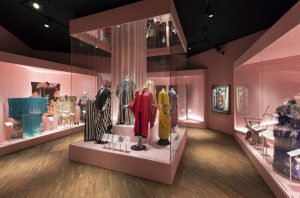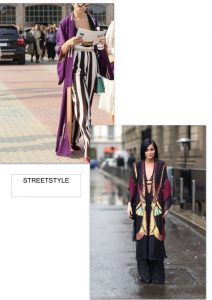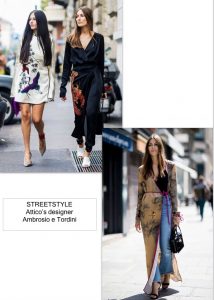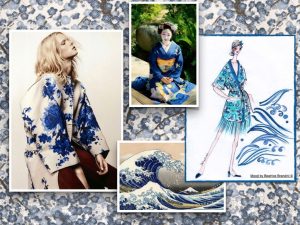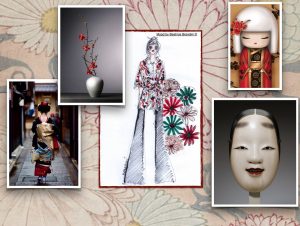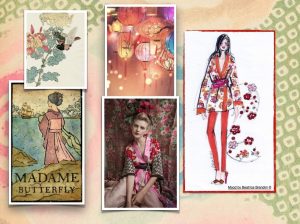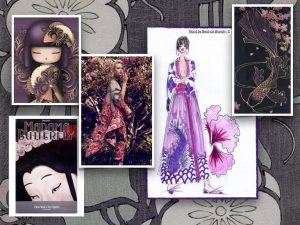“Fior di Loto” by Beatrice Brandini
Japanese kimono (1860 – 1880), on display in the Victoria & Albert Museum in London
In 1872, the writer Philippe Burty wrote the essay: “Japanisme. La Renaissance Literaire et Artistique” ; since then, Japonism (an expression coined by Burty himself) has never experienced a crisis, recurring, cyclically, in art, design, fashion, important artistic expressions that influence everything around us.
Japanese kimono (1840 – 1870), on display in the Victoria & Albert Museum in London
Japanese kimono (1860 – 1900), on display in the Victoria & Albert Museum in London
“Shiori” by Beatrice Brandini
We are attracted to the exotic, if on the one hand we recognize the undisputed charm of the highly decorated oriental, from the other we are also fascinated by a different lifestyle, more calm and relaxed (at least apparently), made of rituals and philosophies that, even if only for a few minutes, they allow (or delude) us to unplug. For this reason, there are many influences in this direction in food, design, beauty and certainly in fashion.
André Derain “Madame Matisse au kimono”
Work by Gustave Léonard de Jonghe
Dolce & Gabbana and Elie Saab collection
We are also fascinated by Japan for the dualism that distinguishes its beautiful people, that is, to be permeated by an immense ancient culture, poised between tradition and experimentation, between past and modernity.
Etro and Gucci collection
Yumi Katsura collection
In the costume, the oriental shapes have influenced fashion since the late nineteenth century, when the silhouettes became more fluid. And if the kimono was born as a garment that distinguished the status of the wearer, over time it became a “chamber” dress, a sort of dressing gown, which on the catwalks, for some seasons already, has conquered its prestigious position, as precious garment, worn day or evening, externally, no longer in homes or, “worse”, hidden in bedrooms.
Work by Léon François Comerre
Images from the exhibition “Kimono: Kyoto to Catwalk” at the Victoria & Albert Museum in London
Many exhibitions dedicated to Japan, the one in progress at the Victoria & Albert Museum in London “Kimono: Kyoto to Catwalk” (until June 2020) is very important. With an eloquent title that underlines the power of this garment, a precious icon in constant evolution, retracing its history from 1660 to the present day. First in Japan, then everywhere in the world.
Streetstyle “Kimono”
The Kimono, literally “a thing to wear”, was originally a simple piece of fabric, wrapped from left to right around the body and fastened by a band called obi. For the Japanese it is still a symbol of national culture, for all of us a garment of irresistible charm. Its history began in the early 1600s through the Edo dynasty, which ensured Japan’s period of great economic stability. Perhaps this is also why the Japanese have never abandoned him, they associate him with power and prosperity.
Inspiration Kimono, Mood Board by Beatrice Brandini
Inspiration Kimono, Mood Board by Beatrice Brandini
The images from the catwalks that I inserted in the post are just some of the many present in these last seasons. Not only kimonos and precious dressing gowns, but a genre that seems to come out of an alcove and travel through the most modern metropolises. I don’t mind this contamination, especially for the kimono, a soft satin or silk jacket, embroidered and precious, very feminine, to be worn over jeans or over trousers.
Inspiration Kimono, Mood Board by Beatrice Brandini
Inspiration Kimono, Mood Board by Beatrice Brandini
A timeless fascination, the same that we have for oriental women, with their diaphanous skin, their hair gathered, with jewels and precious flowers, with their delicate gestures, lost, or forgotten, by us, westerners stressed.
Good life to everyone!
Beatrice


